Gregory and Deborah Macres from California lost their son, Gregory, in 1997, when he was just 4 years old. Little Gregory had a severe form of a rare genetic disorder called Gaucher disease and died after unsuccessful experimental treatment. Despite their personal loss, the Macreses did not abandon the drive to find a cure for the disease, setting up a charitable foundation to support research in several laboratories around the world, including that of Prof. Anthony Futerman in the Biomolecular Sciences Department at the Weizmann Institute of Science. Now, after 25 years of research, in a new study in Gene Therapy , the Weizmann scientists present an innovative genetic treatment that has shown promising results in mice, including dramatically increasing life span and preserving motor function.

Gaucher disease is caused by an inherited defect in an enzyme that the body uses to break down a fatty substance called glucocerebroside. When this substance is not broken down, it accumulates in the cell's "recycling bins," called lysosomes - where molecules that have completed their life cycle are broken down into their component parts - causing damage that can be fatal. The disease is relatively more common among Ashkenazi Jews, who usually have the least severe type - Gaucher Type I - which does not lead to brain damage. The two other variants of the disease are much graver: Gaucher Type II causes severe brain damage, with a rapid worsening of symptoms and death before age 2, while for people with Type III, the fatal brain damage occurs later in childhood or even in adulthood.
""The Macres family has followed my research for 25 years. The new gene therapy for the form of Gaucher disease that took their son Gregory feels like closure"
The accepted treatment today for Gaucher disease is repeated injections of undamaged enzyme to reduce the accumulation of glucocerebroside in body tissues. This treatment, however, does not cure the disease, nor does it help in the more severe types of Gaucher disease that damage the brain. This is because of the blood-brain barrier, the dense layer of cells that surround blood vessels in the brain and prevent large molecules, such as the enzyme being injected, from reaching their target. Consequently, the more severely affected patients still do not have a viable treatment. In recent years, several research groups have been focusing on gene therapy, an innovative treatment in which a normal copy of the defective gene is inserted into cells, using a virus.
But inserting a normal copy of the defective gene does not necessarily compensate for the genetic defect. In an effort to overcome this, researchers from Prof. Futerman's lab cooperated with colleagues from Prof. Sarel Fleishman 's lab, which specializes in using computer models to design and improve enzymes. Using an advanced algorithm they had created, scientists in Fleishman's lab designed a version of the gene that would not only carry the right recipe for the enzyme, but would carry an improved recipe leading to a particularly active and stable version capable of compensating for the genetic defect and combating the accumulation of glucocerebroside.

Once they had genetically engineered the gene, scientists led by Dr. Ivan Milenkovic and Dr. Shani Blumenreich from Futerman's group injected it into the brains of young mice with a disorder that mimics Gaucher Type III, a severe and incurable form of the disease. The researchers monitored the condition of the mouse pups after treatment by measuring their body weight and assessing their motor function. The scientists were stunned to discover that, like completely healthy mice, most of the diseased mice treated with the engineered gene gained weight and lived significantly longer. The pups also maintained motor function and equilibrium, some even reaching a totally normal level. The mice that were left untreated or were given the natural version of the gene lost up to 20 percent of their body weight in the first four months of the experiment, and their motor function deteriorated as the disease progressed.
Next, the researchers sought to understand why the treatment was so effective. They analyzed samples from the mouse brains and saw that treatment with the engineered gene significantly reduced the accumulation of glucocerebroside in the brain, while the natural version of the gene did not. "We assume that the improved stability of the enzyme enables it to evade being broken down in the cell - it survives and does its vital job," Futerman explains.

One especially important finding was that this treatment reduced brain inflammation. In 2015, researchers from Futerman's lab discovered that a certain inflammatory protein is expressed at high levels in the brains of people with Gaucher Types II and III, and that there is a correlation between the level of gene expression and the severity of the disease. From this they realized that inflammation plays a key role in brain damage and that the gene is a marker for the disease's progression. In their new study, they found that the expression level of both this marker and two additional inflammatory genes drops in mice that receive the new treatment. These findings were confirmed by MRI scans, which showed a reduction in inflammatory markers in the mice's brains.
"For a quarter of a century, the Macres family has been following my research and I have been updating them on every development. The innovative gene therapy for the version of Gaucher disease that took their son Gregory feels like a kind of closure for me," an emotional Futerman said. "We hope to find partners to help us take this innovative treatment forward - from a more extensive experiment to clinical trials in people. There is a lot of interest in this research beyond Gaucher disease, which is relatively rare, because studies show that the defective gene also increases the risk of Parkinson's disease."

Science Numbers
The incidence of Gaucher disease in the general population is up to 25 cases per 100,000 births. Among Ashkenazi Jews, it is much higher: 1 in 1,200 births.
Also participating in the study were Ariel Hochfelder, Aviya Azulay, Tammar Joseph and Dr. Olga Khersonsky from Weizmann's Biomolecular Sciences Department; and Dr. Inbal E. Biton, Mirie Zerbib, Dr. Roni Oren and Dr. Michael Tsoory from Weizmann's Veterinary Resources Department.
Anthony H. Futerman is the incumbent of the Joseph Meyerhoff Professorial Chair of Biochemistry.






